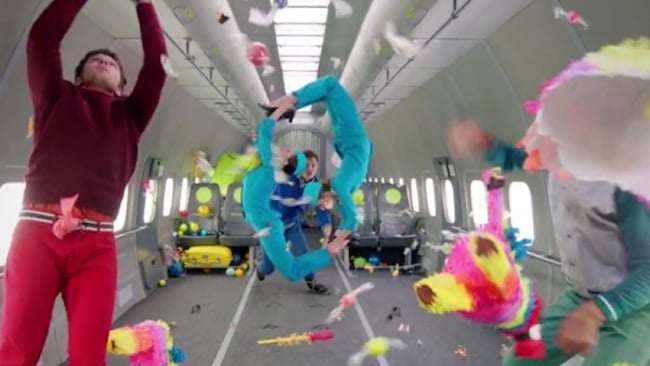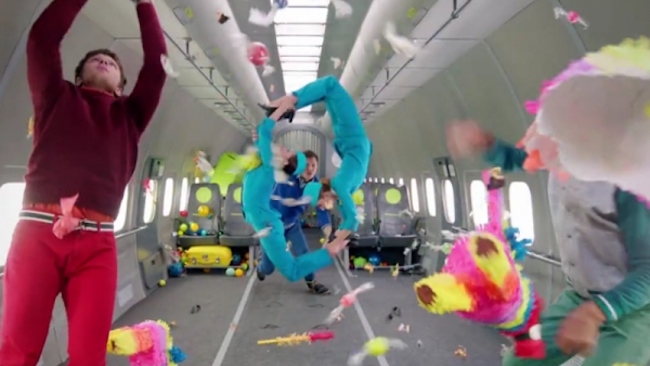
 Filming in 27 second slices of weightlessness...
Filming in 27 second slices of weightlessness...
The weight is over for the latest effort from OK Go, famed purveyors of mindbending, achingly choreographed and sometimes groundbreaking music videos.
Although never a household name, Chicago’s OK GO are widely credited with helping to popularise the viral spread of music videos across the Internet over the last decade. This they’ve achieved with a range of ambitious filmmaking techniques, ranging from incident-packed single-shots and clever choreographing through to frame-stacked green screen composites and paint-splattered Rube Goldberg machinations.
For their first release in 2016, the band has not so much broken ground once again as parted with it entirely. Directed by band leader Damian Kulash and his sister Trish Sie (a choreographer and regular band video collaborator), the video for ‘Upside Down & Inside Out’ sees the quartet spend the duration of the video in zero gravity - while once again indulging in their passion for choreographed moves, bright colours and paint explosions.
The video was created with the help of Russian airline S7, which provided access to a military aircraft (kitted out to look like a passenger jet) capable of performing a parabolic manoeuvre that would provide 27 seconds of weightlessness each time. Months of planning were followed by a total of 21 flights. Director of photography, Evgeniy Ermolenko, developed a custom rig to wedge between the floor and ceiling of the aircraft (to keep it secure in both zero and double gravity), while the difficulties of bringing any kind of generator onboard made it necessary to power the camera using the plane’s own battery power.
Though the video appears, like several previous OK Go videos, to have been shot in a single take, this time around the effect was achieved using eight sequences from around 45 minutes of footage in total. Painstaking scene setup and post production morphs between transitions completed the illusion. (Even so, eagle-eyed viewers should be able to spot 7 key points where gravity visibly starts to return). The final piece of the puzzle involved filming and miming to a playback of the song at slower-than-normal speed, in order to compensate for the slow-motion feel of zero-G action. The footage was then sped up by almost 29 percent to bring the song back to normal speed.
And yes, the project involved onboard vomiting from the crew. 58 times, to be exact.
Tags: Production


Comments